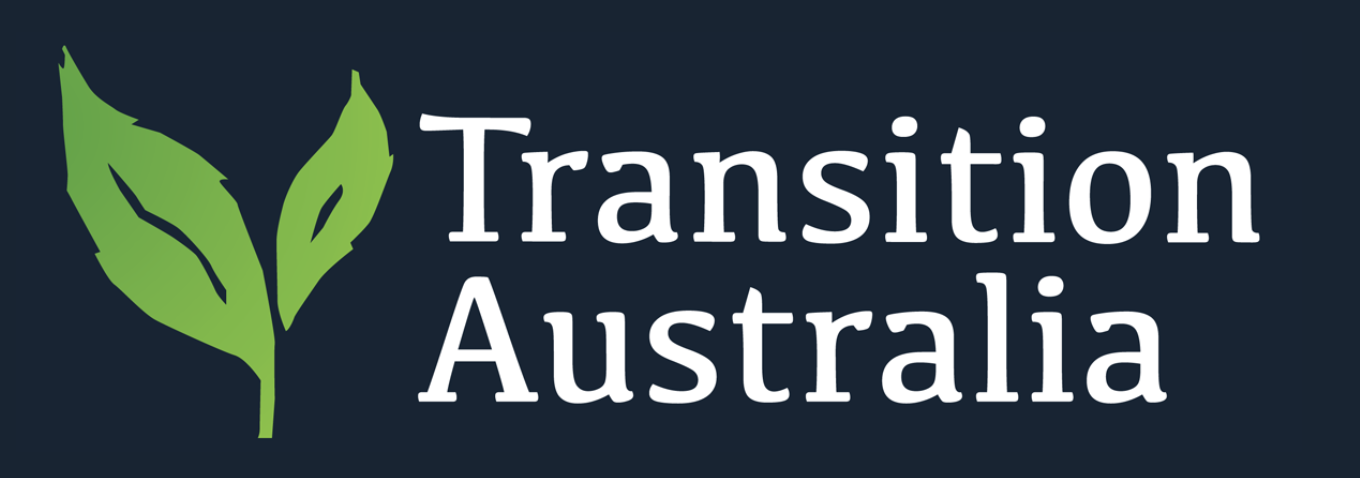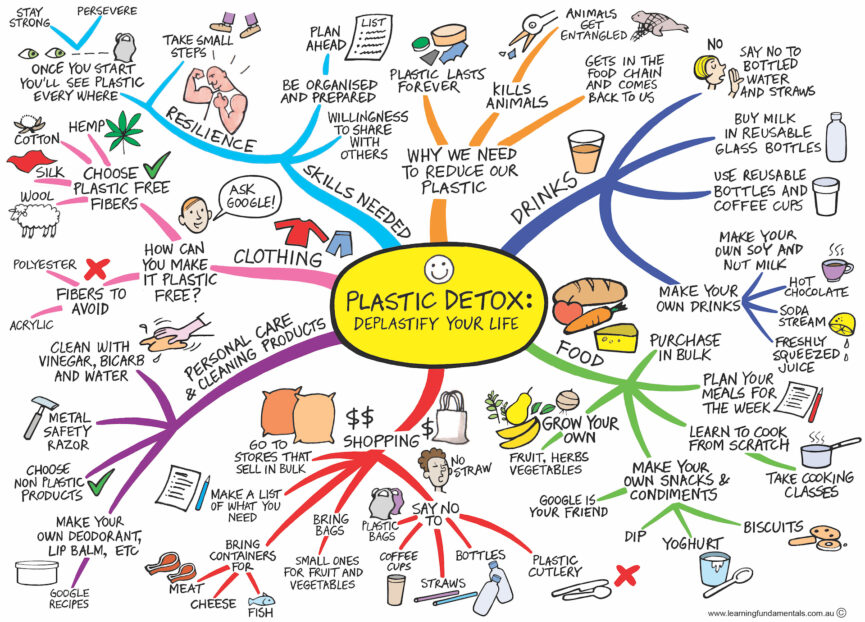Imagine:
a world with no plastic in nature by 2030…
a world where our oceans teem with marine life
(NOT discarded nets, bottles and bags).
Where no human breathes the toxic fumes of burning plastic.
And where every indispensable plastic product is used to make another.
These words of the World Wildlife Fund (WWF) surely describe a vision we could all embrace.
With that vision in mind, what can we do?
We can sign up for Plastic Free July® , a global movement that encourages each of us to do our bit to clean up our oceans and our planet, with at least 300 million people around the globe taking part.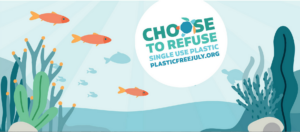
We can refuse, re-use, recycle.
We can lobby for systems change starting with policies to reduce or ban single use plastics.
We can work towards a circular economy.
This 9-minute video Does Plastic Free Living Still Matter in 2021 is entirely relevant in 2022. It looks at the despair we can feel at the increased plastic waste created during the pandemic and includes an interview with Rebecca Prince-Ruiz, founder and Executive Director of Plastic Free July®.
As Rebecca says in the interview “behaviour change is the seed of cultural and systems change”.
As the video points out it would make an enormous difference if we stopped using the big four:
- plastic bags
- plastic water bottles
- plastic straws
- disposable cups and lids.
Each day tonnes of waste are created by millions of people saying “it’s only one cup”.
The Australian Environmental Films Association has created a series of four short films on How to reduce your waste focused on the Waste Hierarchy
REFUSE
REDUCE or REPURPOSE
RECYCLE
LANDFILL
Here are the first two videos (each around 2 minutes):
How to reduce your waste: Waste Hierarchy Part 1
And here is the second video, looking at an issue we all face when we visit a supermarket – all that single-use packaging “of which every piece we’ve ever bought still exists today”.
Just say no! The power of refusing plastic: Waste Hierarchy Part 2
You can find the other two films in the series on the website ofThe Australian Environmental Films Association.
All are short and topical and worth sharing on social media.
The Australian Government Department of Climate Change, Energy, the Environment and Water has some useful tips
https://www.energy.gov.au/households/household-guides/seasonal-advice/plastic-free-july
Transition Bondi have a useful article on their website. Here are the sections on How is plastic produced and what is its history? and What damage does plastic production and waste cause? used with permission: https://www.transitionbondi.org/plastic-free-july-other-stories/
How is plastic produced and what is its history?
Plastic is made from a variety of fossil fuels which, through a polymerisation or polycondensation process, become transferred into polymer before taking a new shape as a plastic item. Plastic had forerunners in bakelite, polystyrene, vinyl, acrylic, nylon and polyethlene.
Injection moulding allowed for these fossil fuel materials to take a multitude of shapes, and produce consumer items fast, and at scale. The promise of cheap, accessible household items gave way to war-time uses during WWII (parachutes, raincoats, helmet-liners). Manufacturers after the war turned their production to peacetime consumption, making substitutes for wood, glass, clothing and then packaging in its diverse forms.
The twentieth century became known as the Plastic Century. The shine of plastic, however, began to wear off once we started to realize the harm it can do to both us and the rest of the environment. This non-renewable resource, used in making single-use plastics takes centuries to degrade (but not disappear). The future needs to deal with this ubiquitous substance by reducing its use developing alternatives finding ways of recycling it.
What damage does plastic production and waste cause?
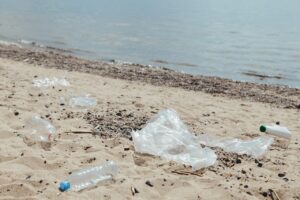
photo by Ron Lach in Pexels
Plastic is entwined with climate change – it is made of fossil fuels and carbon emissions are produced in the manufacturing process. The effects are felt through the pollution of air, water and ocean. You only have to take a walk along the shore of your local beach to see examples of this pollution, examples that only represent the tip of the iceberg.
This pollution has a direct impact on the ecosystem around us. We are experiencing a loss of marine life with birds feeding plastic to their young and dumped fishing nets entrapping sea animals. By 2030, there will be a tonne of plastic to every 3 tonnes of fish. On a smaller scale, the depletion of plankton – which absorb carbon from the atmosphere – is becoming an increasing issue. Us humans are not separate from this cycle of pollution either, with microplastics entering the food chain and ending up in human bodies.
On a corporate level, the fossil fuel industry is ramping up production of plastics to compensate for the reduction in demand as we become more environmentally aware. Already they produce much more plastic than we can use, and the global north sends waste to Africa and Asia leaving others to deal with it. 32% of this waste ends up in the environment, 40% goes to landfill, 14% is incinerated – which requires use of fossil fuels and produces toxic pollutants and ash.
The business of plastic is driven by supply, not demand – by the aggressive marketing of single-use plastic.
Plastic has crept into almost every corner of our lives. 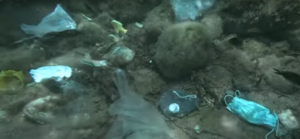 Whilst it offers a solution to a number of daily activities, the harm that it brings, especially single use plastics, needs to be urgently addressed. The solution is a combination of small-scale individual change and a large-scale corporate manufacturing and policy shift. What actions are you taking to create a plastic free future?*
Whilst it offers a solution to a number of daily activities, the harm that it brings, especially single use plastics, needs to be urgently addressed. The solution is a combination of small-scale individual change and a large-scale corporate manufacturing and policy shift. What actions are you taking to create a plastic free future?*
Links
Plastic Free July® Take the Challenge: https://www.plasticfreejuly.org/take-the-challenge/
Australian Environmental Films Association: https://www.australianenvironmentalfilms.org/projects
Films
Screened by Transition Bondi and recommended for other groups to screen:
A Brief History of Plastic
The Story of Plastic (Animated Short)
Plastic Free July 2021: does it still matter?
The Vision for a Circular Economy
TED: A radical plan to end plastic waste
History of the plastic spoon
Other Organisations & Campaigns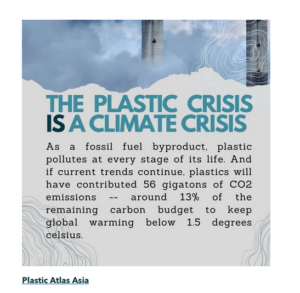
Circular Economy (Ellen MacArthur Foundation)Stop Ghost Gear (WWF Petition)
#breakfreefromplastic a global movement envisioning a future free from plastic pollution.
Here is a poster created by plastic Atlas Asia https://www.breakfreefromplastic.org/library/#gallery
Transition Streets workbook has a chapter on Waste and Consumption.
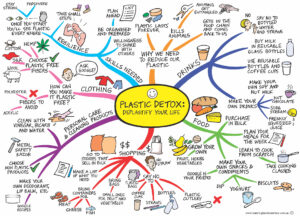
Mind map created by Jane Genovese, used with permission
Our feature image is a wonderful mind map created by Jane Genovese, co-founder of Transition Guildford in Perth WA, who has created many amazing Mind Maps
View this image in greater detail and higher resolution here
Mary Stringer July 2022
